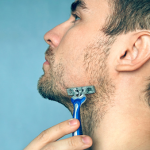Prolonged pregnancy: causes, symptoms and management
When a pregnancy is prolonged beyond the usual period of gestation, it is considered to be postmature or overdue. Before the midwife can diagnose postmaturity, he or she should know the accepted average duration of pregnancy and should also be able to calculate the expected date of delivery. The average duration of a normal pregnancy is 280 days or 10 lunar months. The expected date of confinement is calculated from the first day of the last menstrual cycle. This is done by adding days to the date of the first day of the last menstrual cycle and adding nine calendar months. What is prolonged pregnancy? Prolonged pregnancy is the elongation of pregnancy beyond term or beyond the normal duration (38-42 weeks) counting form the first day of the last normal menstrual period. A pregnancy that has gone beyond 280 days is known as postmature or prolonged. Usually, in the absence of other complications, the obstetrician waits until the pregnancy is 290 days or more before action is taken. What are causes of prolonged pregnancy? Post-term pregnancy is associated with the following factors: Ways of estimating the gestational age How to diagnose prolonged pregnancy The diagnosis of postmaturity is based on the following: Nursing diagnosis of a woman with prolonged pregnancy Management of postmaturity The midwife should always refer all suspected cases of prolonged pregnancy to the doctor. The patient is usually admitted to hospital at 10 to 12 days past the expected date of delivery. After ascertaining that the pregnancy is overdue or prolonged, induction of labour is often performed at about 42 weeks of gestation. In view of accurately diagnosing postmaturity, every effort must be made to ascertain the duration of pregnancy before induction is carried out lest a premature baby is delivered. The date of quickening if remembered by the patient may aid in the estimation of the duration of pregnancy. As a general rule, 20 weeks are added to the date of quickening to obtain a rough estimate of the expected date of confinement. After induction, supervision of the patient in labour is of vital importance. It should be noted that the infant may be severely asphyxiated at birth. The paediatrician should be informed long before the baby is delivered and arrangements should be made for the transfer of the newborn to the special baby care unit. How does postmature baby look like? After delivery, suggestive evidence of postmaturity may be obtained from the birth weight and overall length of the baby. If the baby’s weight exceeds 4kg, postmaturity may be suspected. This is, however, not conclusive. A length of 54cm or more is also highly suggestive of postmaturity. It is necessary to impress on the midwife that some cases of postmaturity are due to cephalopelvic disproportion. This should be done ruled out before induction of labour is carried out. The postmature baby sometimes has a typical appearance. It looks old and wizened. Its skin is wrinkled and inelastic (dry peeling skin). The skull bones are usually harder than those of a mature newborn baby. Complications of post-maturity/prolonged pregnancy There are two major hazards associated with prolonged pregnancy or postmaturity. It is a known fact that placental function begins to wane from the 38th to 40th weeks of pregnancy. After the 41st week of pregnancy the longer the fetus remains in-utero the worse the prognosis because of the risk of intrauterine hypoxia. This risk, which is due to diminution in placental function, may be aggravated by pregnancy complications such as pre-eclampsia, hypertension, chronic nephritis and antepartum haemorrhage. When pregnancy is prolonged beyond 41st weeks, the baby’s size may increases in the absence of placental insufficiency and the increase in fetal head size may cause a difficult labour. This may lead to obstructed labour with all its ugly sequelae. Hence, two main hazards are recognized in postmaturity: Both of these conditions may bring about an increase in intrauterine death or perinatal mortality rate.
Prolonged pregnancy: causes, symptoms and management Read More »



